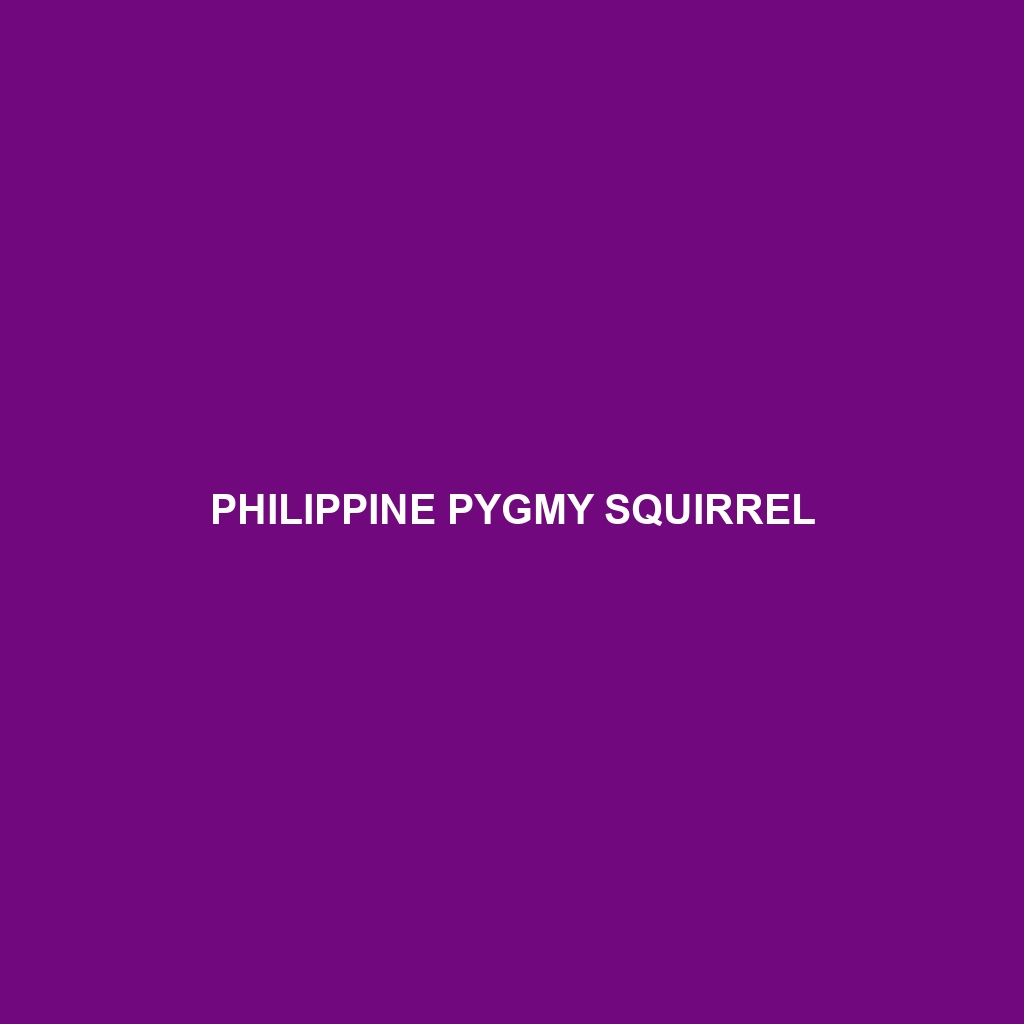Philippine Pygmy Squirrel: A Unique Arboreal Species
Common Name: Philippine Pygmy Squirrel
Scientific Name: Exilisciurus concinnus
Habitat
The Philippine Pygmy Squirrel is primarily found in the dense tropical forests of the Philippines, particularly on the islands of Mindanao, Leyte, and Samar. This small rodent thrives in lush habitats characterized by a mixture of tropical rainforest and secondary forest areas, where it takes advantage of the richness of flora and diversity of tree species. Its preference for high canopies allows the squirrel to navigate easily and find shelter among the foliage.
Physical Characteristics
The Philippine Pygmy Squirrel is one of the smallest squirrels in the world, typically measuring just 10 to 15 centimeters in length, with a tail that may be a bit longer. Its coat is generally a rich reddish-brown, with a lighter underbelly, making it well-camouflaged against tree bark. Distinctive features include its large eyes, which enhance its vision in low-light conditions, and sharp, agile claws that aid in climbing. This species also has a compact body shape, which is ideal for maneuvering through narrow branches.
Behavior
Philippine Pygmy Squirrels are primarily diurnal, meaning they are most active during the day. They exhibit solitary behavior but are also known to engage in social interactions, especially during the mating season. Their agility and speed make them excellent climbers, often leaping between branches in search of food. These squirrels communicate through various vocalizations and body language, including tail flicking, which serves as a warning signal to potential threats.
Diet
These squirrels are predominantly herbivorous, feeding on a variety of nuts, seeds, fruits, and fungi. They play a vital role in seed dispersal, thereby contributing to forest regeneration. Their diet also includes a selection of leaves and tree sap, showcasing their reliance on the rich biodiversity of their habitat. The adaptability in feeding habits enriches their ecological niche and supports local plant species.
Reproduction
The reproductive habits of the Philippine Pygmy Squirrel involve a breeding season that typically occurs between March and May. Females give birth to litters of generally two to three offspring, which are born blind and helpless. Parental care is predominantly the responsibility of the mother, who nurtures the young until they are independent after about six weeks. The breeding behaviors and nurturing strategies are significant in maintaining the population of this unique species.
Conservation Status
Currently, the Philippine Pygmy Squirrel is classified as Endangered due to habitat loss and fragmentation, primarily caused by deforestation and human encroachment. Conservation efforts are crucial for preserving this species and its habitat, making awareness of its status vital for ensuring its survival.
Interesting Facts
– The Philippine Pygmy Squirrel is not only one of the smallest squirrels but also one of the least understood species in its family.
– It has unique adaptations that allow it to thrive in the high canopy, including specialized feet for gripping tree bark.
– These squirrels have strong ecological significance, aiding in the dispersal of seeds that contribute to the health of the rainforest.
Role in Ecosystem
The Philippine Pygmy Squirrel plays a critical role in its ecosystem as both a seed disperser and as a prey species for larger predators. By facilitating the growth of various plant species, it helps maintain biodiversity within its habitat. Additionally, this small mammal contributes to the food web, supporting larger birds of prey and carnivorous mammals, highlighting its importance in the ecological balance of tropical forests.
